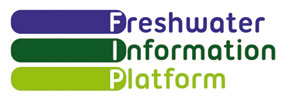Storyline - Consensus World
The Consensus World storyline is based on a scenario where future development follows similar patterns to the recent past: the economy grows well in some countries and poorly in others, and inequality between rich and poor countries continues. Despite this disparity, the world tends towards being relatively politically stable (Shared Socio-Economic Pathway 2). This occurs alongside a stablising and relatively low level of climatic change (Representative Concentration Pathway 4.5). The Consensus World storyline features a future world with the following features:
Economy
In the Consensus World, the global economy and world population are growing at a rate similar to today. Governments worldwide aim to achieve both economic growth and sustainable and efficient use of resources. Investments tend to be low-risk, and technology improves over time, but without any fundamental breakthroughs. While the economies of some countries grow, others perform poorly and global poverty is not eradicated.
Energy
Energy is produced using a mixture of renewable and fossil fuel sources in the Consensus World. Between now and 2030, fossil fuel dependence decreases slowly, but this does not impact on the growth of renewables. The use of bio-energy crops increases significantly. The reproduction rate levels off in the second half of the century, so pressures on energy resources are not increased too significantly by population growth. Regulations are in place to save energy and reduce emissions.
Environment
In Consensus World, there is public and political interest in environmental conservation. This is largely in line with existing regulations, though these have been extended and strengthened over time. Greening measures that are currently being proposed within the EU are being implemented. As now, global and national institutions are making some progress towards sustainable development goals, but this progress is slow. The environment continues to be degraded over time, but there are some improvements.
Resource and energy use declines. Continued poverty in some countries and areas means that many people are left vulnerable to environmental change.
Policies
Current European environmental policies (such as the EU strategy on Adaptation to Climate Change, the EU Biodiversity Strategy, the Habitats and Birds Directives, the Directive on Industrial Emissions, the Regulation on European Pollutants, Floods Directive, Directive on Environmental Quality Standards and Dangerous Substances and the Water Framework Directive) are continued beyond 2020 in an improved and more integrated manner. The objectives and targets are well designed and their achievement is realistic.
Water Management Strategies
European water management strategies are designed in line with the continuing suite of strong regulations. Moderate economic growth means that cheap solutions that are sustainable over the moderate to long-term are the preferred choice, but there is a trend towards solutions that are more sensitive to ecosystem health, and green environmental solutions that work sympathetically with natural processes and functions.
Further reading
MARS deliverable:
Faneca Sanchez, M. et al. (2015). Report on the MARS scenarios of future changes in drivers and pressures with respect to Europe’s water resources. Part 4 of MARS Deliverable 2.1: Four manuscripts on the multiple stressor framework. (Download report, 15mb)
Other websites:
SSP Database (Shared Socioeconomic Pathways) - Version 1.1 (External website)
IPCC Data Distribution Centre (External website)



